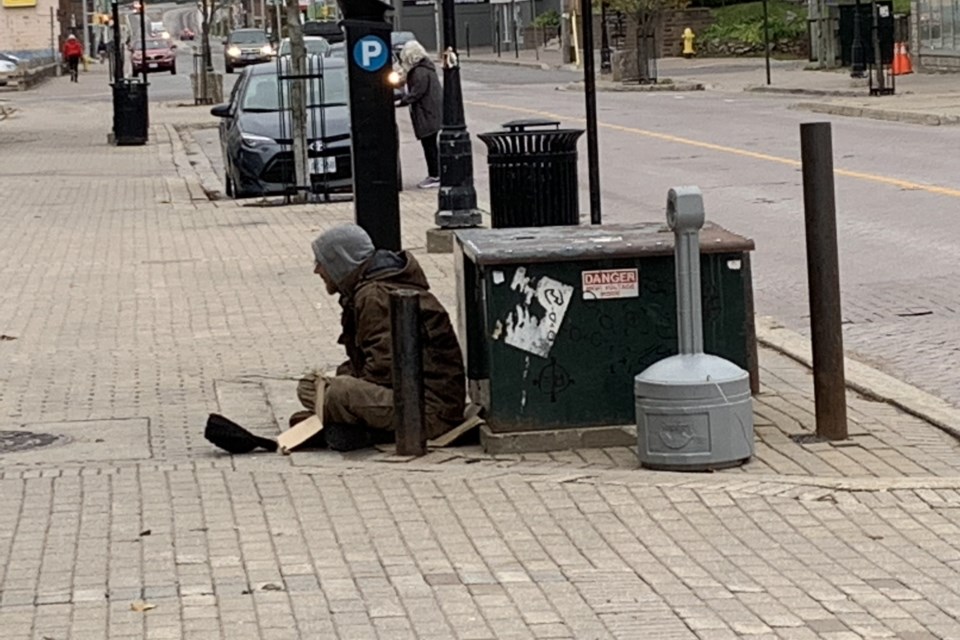To the editor:
A little while ago I wrote a letter to BayToday in which I stated that no one “chooses” to be homeless. I stand by that statement; however, I think that more explanation is needed.
See: Homelessness, prevention is the best medicine
First, I want to point out that I am not for harm reduction in terms of how it is being presented now as a solution to homelessness and addiction in our society.
We should help people where they are, absolutely. The naloxone program is valid in that it has saved countless lives. The clean needle program is also valid and beneficial as a lifesaving service. The methadone and suboxone programs save lives as well, allowing people to live their lives, go to work, attend school, and take care of their kids, without spending their days looking for opiates on the street, not to mention risking their lives in the process.
Unfortunately, this program is not being implemented in the way it was intended in its initial presentation.
Addiction is real and not solely a disease of the poor and uneducated in society so, to those of you who feel a kind of superiority and/or disgust when you see the “junkie” sleeping in the doorway, think again. You are not superior nor are you immune. Your children, your spouses, and your parents are not immune.
Let’s get back to harm reduction. In my opinion, our governments are using this term to get themselves off the hook for yet another plan that was, truthfully, developed to save them money and failed miserably outside of that. This plan was touted by the government in the 1970s as being “humane.” They proudly proclaimed that they would release psychiatric patients back into the community to live their lives as they chose, with, of course, the help of the government which promised to provide community supports and services.
Addiction was not even a blip on the radar at this time, few correlations or connections between the two diseases were made. Psychiatric facilities across the country were closed and they called their plan "deinstitutionalization," patting themselves on the back for being progressive and forward-thinking. A lot of money was saved, however, adequate supports and services in the community did not appear (no surprise) and the downward spiral began.
Patients who could not care for themselves began to flounder and many turned to drugs and even crime, unwittingly, to ease their anxiety. This brings me to our current situation. Deinstitutionalization was never about more humane treatment for people with mental illnesses. It was always about the money.
Today, governments are once again patting themselves on the back and calling their new plan — to counter the old plan that was a dismal failure and, in fact, largely responsible for the rise in homeless and addiction numbers today — harm reduction.
The services and programs developed under the harm reduction umbrella are needed, unfortunately, without any prevention services they too are doomed to fail. One has only to look at the rise in homeless numbers, even in small cities, for proof of this. Since these programs were put in place things
have gotten worse, much worse. When a person finds themselves on the street, it is extremely difficult for them to fight their way back. The harm reduction model only beats them down further. Yes, it has saved lives but the number of homeless, addicted, and mentally ill continue to rise.
I can’t count the number of times I have heard, “They don’t want help, they want to live on the street.”
That is ridiculous. If you’re talking to someone who is in the throes of addiction, who is hopeless and beaten down, naturally their response will be: “I want to stay here.”
They’re afraid of what will come next, how they will feed their addiction, and what kind of hoops they will have to jump through. Their number one priority when they are at rock bottom, is their reality at the moment, not filling out endless forms to get on a five-year wait list for housing or a one-year wait list for substandard addiction or mental health treatment.
We needed to help them before they got here. I am not saying that we should leave them to die on the streets, simply step over the addict that has just overdosed in the doorway and carry on with our day. The current harm reduction theory is counting them out, killing them with kindness to make ourselves feel good and save governments money and it is exacerbating the problem.
Harm reduction is needed now due to our failure to provide quality services and programs before they ended up on the street.
This level of homelessness and addiction is not normal and it should never be viewed as such. Our current programs take away hope, dignity and, basically, the will to live. We are essentially telling people that they might as well give up and resign themselves to the fact that the hellish existence they are living is as good as it is going to get for them, and the only help we can offer is to give them clean needles and a place to inject with others, and maybe bring them back from the brink of death until, finally, one time, they don’t make it back.
Harm reduction is clearly NOT the solution. We need to do better. We need to speak up and question politicians at their photo op funding speeches. We are smarter than this. We need to ask for evidence that their hastily put-together plans will benefit the people, not just their election platform.
Rita Hamilton
North Bay



